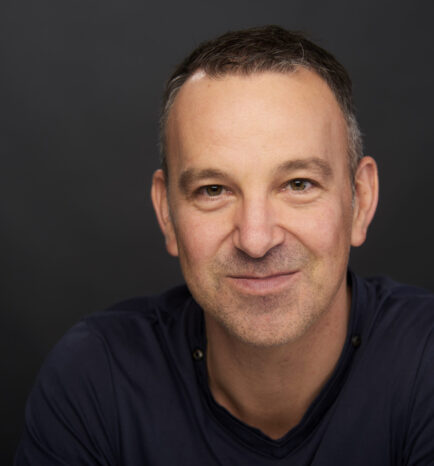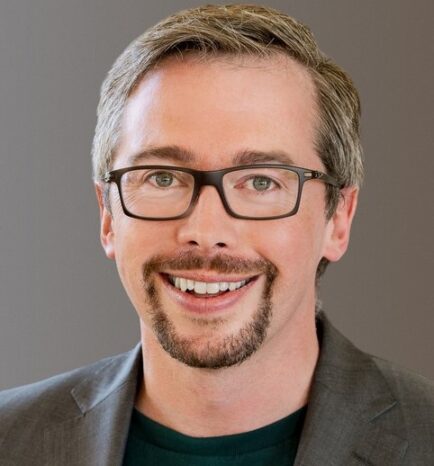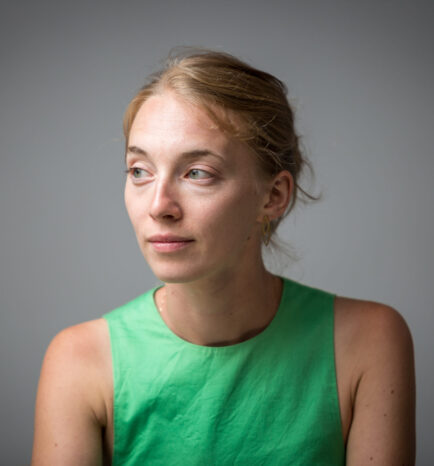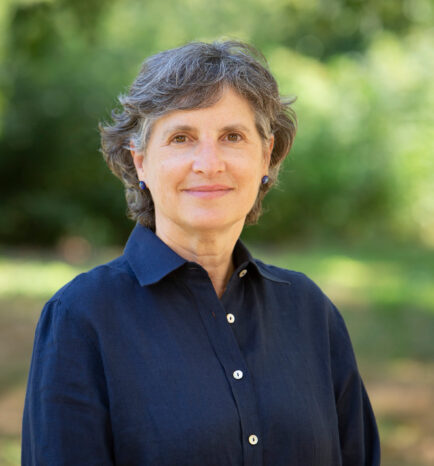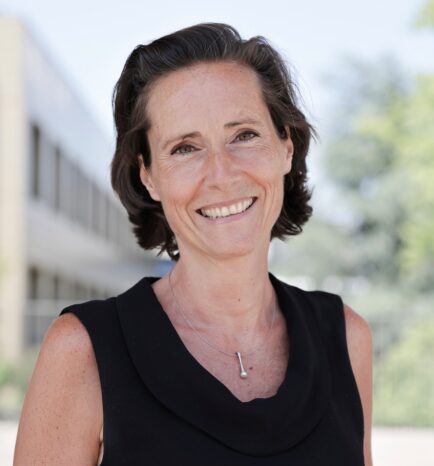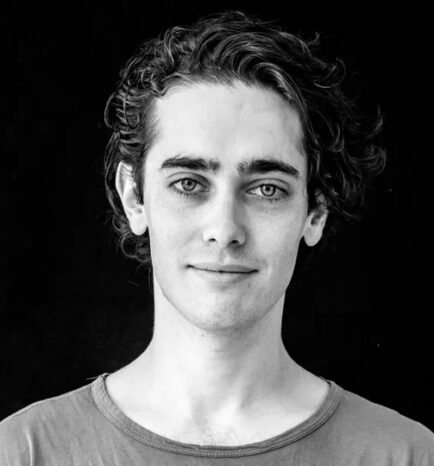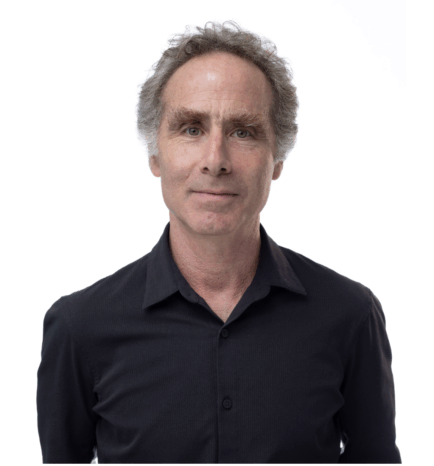
To mark the U.S. premiere of Lighten Up! – a traveling exhibition originally shown at the EPFL Pavilions in Lausanne, Switzerland that explores biological rhythms through artistic and scientific lenses – Swissnex, in collaboration with the MIT Museum, is holding a one-day interdisciplinary symposium, bringing together artists, scientists, and the wider community to explore themes of light, rhythm, time, sleep, and perception.
Framed by the metaphor of a prism – breaking light into its constituent colors – the day is structured into thematic segments that pair artists and scientists in dialogue, performance, or experiment. The prism can refract light into a spectrum, symbolizing how one event, idea or reality can be seen in multiple ways, depending on the angle or context. Like a rainbow appearing out of storm and light, multiplicity reveals itself in layers of color – each hue a different voice, a different view.
Departing from the classical symposium format, the event will be enriched with artistic interventions that shift the sensory and conceptual register throughout the day, along with slow lighting transitions, rhythm-based exercises, dreamwriting stations, and guided moments of reflection. These elements invite participants to not only talk about biological rhythms, but to inhabit them.
Program
10:00–10.30 Arrival & Coffee
10:30–10:40 Welcome & Introduction
- Michael John Gorman | Director, MIT Museum
- Marc Streit | Head of Arts and Creative Industries, Swissnex in Boston and New York
10:40–11:00 Indigo: Warm-Up Exercise
The day begins with a guided movement session. Together, we will expand our scope of sensations, connect effort to pleasure, and invite a range of texture into the body, connecting more deeply to ourselves, fellow movers, and the space.
- Ana Harmon | Visting Lecturer, Harvard University
11:00–11:45 Blue: Biological Rhythms
Elizabeth Klerman and Guy Amichay will get together to lighten up the topic of rhythms from different angles. We will hear about rhythms across different timescales and look at the example of fireflies as well as circadian, lunar, and annual rhythms. Through conversation and short video screenings we will learn more about the different clocks that govern nature and ourselves.
- Elizabeth Klerman | Professor of Neurology, Massachusetts General Hospital & Harvard Medical School
- Guy Amichay | Research Associate, Northwestern University
11:45–12:30 Green: Perception – Exploring Science through the Lens of Art
After a short introduction to the scientific themes explored in the Lighten Up! exhibition, co-curator, scientist and artist Marilyne Andersen will offer a tour of its various installations, each a different interpretation of light as a giver of time to the living – and as such, a renewed tribute of the power of art in revealing scientific discovery through emotional pathways
- Marilyne Andersen | Co-curator of Lighten Up!, artist of Circa Diem 2.0, Professor at EPFL and Head of LIPID Lab, Director General of GESDA Foundation
12:30–14:00 Lunch Break
14:00–14:45 Yellow: Light Pollution
Insect populations around the world are declining rapidly. But why? While habitat loss, pesticide use, and climate change all have something to do with it, Dr. Avalon Owens shows in this talk that light pollution is another important — but too often overlooked — bringer of the insect apocalypse. Light pollution interferes with the development, movement, foraging, courtship, and reproduction of diverse insect species, including many that we know and love to see in our gardens. Fortunately, light pollution can be cheaply, easily, and instantly eliminated. Doing so will help ensure that we live in harmony with our insect friends and neighbors for generations to come.
- Avalon Owens | The Rowland Institute at Harvard
14:45–15:30 Orange: Sleep, Darkness & Dreams
- Seth Riskin | Founding Manger, MIT Museum Studio
- Adam Haar Horowitz | CEO, DUST
15:30–16:00 Coffee & Reflections
Lighting design by Evey Connerty-Marin
Moderator
-
![]()
Bio
Lee Moreau
Founding Director
Other TomorrowsOver the past two decades, Lee has directed service and experience design projects for leading organizations like Southwest Airlines, BBVA, Google, P&G, Nike, Eli Lilly, Hilton, Kaiser-Permanente, Chili’s, Novartis, Jamba, and Lincoln Center that blur the boundaries between content and experience. Before founding Other Tomorrows, Lee was the VP of Design at EPAM Continuum, the Director of Environments at 2×4, and worked as a designer at IDEO and the Rockwell Group. When he’s not in the studio, Lee can be found podcasting on Design Observer or in the classroom at Northeastern University, where he is the Professor of the Practice, Design teaching courses on design, strategy, and innovation.
Welcome & Introductions
-
![]()
Bio
Michael John Gorman
Mark R. Epstein (Class of 1963) Director
of the MIT Museum,
Professor of the Practice of Science, Technology, and Society at MITMichael John Gorman is the The Mark R. Epstein (Class of 1963) Director of the MIT Museum, and Professor of the Practice of Science, Technology, and Society at MIT. Gorman was previously Founding Director of BIOTOPIA Naturkundemuseum Bayern (www.biotopia.net), a new museum of life sciences and environment in development in Munich, and University Professor (Chair) in Life Sciences in Society at Ludwig-Maximilians-University Munich, where he also had a courtesy professorship at the Faculty of Literature and Linguistics. Previously he was Founding Director of Science Gallery at Trinity College in Dublin, dedicated to igniting creativity and discovery where science and art collide. In 2012 he founded Science Gallery International (www.sciencegallery.org) with the goal of bringing Science Gallery experiences to a global audience, with Science Gallery locations now open or in development in London, Melbourne, Bangalore, Atlanta, Monterey, Rotterdam and Berlin. Prior to founding Science Gallery, Michael John was Lecturer in Science, Technology and Society at Stanford University and has held postdoctoral fellowships at Harvard University, Stanford University and MIT.
He has written numerous books on topics ranging from Buckminster Fuller’s architecture to seventeenth century science and articles and reviews in journals including Nature, Science, Nature Medicine, and Leonardo. His recent books include The Scientific Counter-Revolution: The Jesuits and the Invention of Modern Science (Bloomsbury Academic, 2020) and Idea Colliders: The Future of Science Museums (MIT Press in 2020). He sits on several Boards including Rachel Carson Center, Max Planck Institute for Biological Intelligence and the Executive Board of the Munich Science Communication Lab and is an Expert Adviser to the European Commission (JRC).
-
![]()
Bio
Marc Streit
Head of Arts & Creative Industries
Swissnex in Boston and New YorkAs Head of Arts and Creative Industries based in New York City, Marc is responsible for Swissnex’s activities at the interface of art and the fields of education, research, and innovation. He sees the arts as an opportunity to engage diverse communities around Swissnex’s thematic focus areas in a tangible, playful, and accessible way. Marc is the former Deputy Artistic Director of the contemporary dance center Tanzhaus Zürich and founder of the zürich moves! festival for contemporary practice in the performing arts. He studied curating at the Zurich University of the Arts (ZHdK).
Indigo: Warm-Up Exercise
-
![]()
Bio
Ana Harmon
Dance Advocate, Visiting Artist
HarvardAna Harmon is a dance and movement advocate. She divides her time between Gaga teaching engagements and supporting the Gaga organization’s various artistic and educational programs across the globe. She has been a Visiting Artist at Harvard since 2022, and was a faculty member at the Boston Conservatory from 2021 – 2025. Now more than ever, she is committed to dancing every day and sharing the healing power of movement.
Blue: Biological Rhythms
-
![]()
Bio
Elizabeth Klerman
Professor of Neurology
Massachusetts General Hospital &
Harvard Medical SchoolDr. Klerman’s efforts are concentrated in clinical and biomathematical research and teaching at Massachusetts General Hospital (MGH), Brigham and Women’s Hospital (BWH), and Harvard Medical School (HMS). Her areas of research are (i) the application of circadian and sleep research principles to normal and pathophysiologic states and (ii) mathematical analysis and modeling of human circadian, sleep, and neurobehavioral mood and performance rhythms. Her teaching and mentoring work in patient-oriented research have been recognized nationally and internationally. She received her undergraduate degree from MIT, and MD and PhD degrees from Harvard University. She is currently a Professor of Neurology at HMS, a Research Investigator at MGH within the Department of Neurology, and a Physician within the Division of Sleep Medicine at the BWH.
-
![]()
Bio
Guy Amichay
Research Associate
Northwestern UniversityGuy Amichay is a research associate in the Department of Applied Mathematics at Northwestern University. He is mostly interested in self-organization—how systems manage to become ordered with no obvious leader or conductor. His current work is on synchronization (coupled oscillators), focusing on different systems such as firefly swarms flashing in unison or groups of crabs waving their claws in sync. Other than that he is also working on association football (soccer) collective movement analysis.
Green: Perception – Exploring Science through the Lens of Art
-
![]()
Bio
Marilyne Andersen
Co-curator, Lighten Up!
Artist, Circa Diem 2.0
Professor at EPFL and Head of LIPID Lab
Director General, GESDA FoundationMarilyne Andersen is a Full Professor of Sustainable Construction Technologies and heads the Laboratory of Integrated Performance in Design (LIPID) that she launched in the Fall of 2010. Since April 2025, she is also the Director General of the GESDA foundation (Geneva Science and Diplomacy Anticipator), whose mission is to anticipate emerging scientific discoveries and translate them into concrete actions for the benefit of society by engaging proactively with policymakers and diplomats.
She was Dean of the School of Architecture, Civil and Environmental Engineering (ENAC) at EPFL from 2013 to 2018 and the Academic Director of the Smart Living Lab in Fribourg from 2018 to 2024. She also co-leads the Student Kreativity and Innovation Laboratory (SKIL) at ENAC since its launch in 2018. Before joining EPFL as a faculty, she was an Assistant Professor then Associate Professor tenure-track in the Building Technology Group of the MIT School of Architecture and Planning and the Head of the MIT Daylighting Lab that she founded in 2004. She has also been Invited Professor at the Singapore University of Technology and Design in 2019.
Marilyne Andersen owns a Master of Science in Physics and specialized in daylighting through her PhD in Building Physics at EPFL in the Solar Energy and Building Physics Laboratory (LESO) and as a Visiting Scholar in the Building Technologies Department of the Lawrence Berkeley National Laboratory in California.
Her research lies at the interface between science, engineering and architectural design with a dedicated emphasis on the impact of daylight on building occupants. Focused on questions of comfort, perception and health and their implications on energy considerations, these research efforts aim towards a deeper integration of the design process with daylighting performance and indoor comfort, by reaching out to various fields of science, from chronobiology and neuroscience to psychophysics and computer graphics. She is leveraging this research in practice through OCULIGHT dynamics, a startup company she co-founded, which offers specialized consulting services on daylight performance and its psycho-physiological effects on building occupants.
Yellow: Light Pollution
-
![]()
Bio
Avalon Owens, PhD
Research Fellow
Rowland Institute at HarvardDr. Avalon Owens is a research fellow at the Rowland Institute at Harvard, where her group works to document the myriad ways in which artificial light at night affects nocturnal flora and fauna (mostly insects). Avalon has spent close to a decade studying how artificial light threatens fireflies and what “firefly friendly” lighting practices can best protect them. Fireflies are small, but they can cast a long shadow by serving as flagship species that inspire dark sky conservation.
At the Rowland Institute at Harvard, Avalon is currently working to understand the ecological costs and evolutionary consequences of moth flight-to-light behavior. Moths that get stuck swirling around porch lights are not able to find mates or visit flowers—in this way, light pollution might threaten both our food systems and the future of life on earth. Visit owenslab.org to view her publications and learn more about her ongoing projects.
Avalon Owens received her Ph.D. in Biology from Tufts University in 2022. She also holds a B.A. in Organismic and Evolutionary Biology from Harvard University and an M.S. in Entomology from National Taiwan University. She is committed to turning scientific recommendations into real world results through public outreach and policy advocacy. As part of these efforts, she frequently collaborates both with DarkSky International and the Xerces Society for Invertebrate Conservation.
Orange: Sleep, Darkness & Dreams
-
![]()
Bio
Adam Haar Horowitz
CEO
DUSTAdam Haar Horowitz is the CEO of DUST, a dream engineering company. He received his PhD from MIT, working between the MIT Media Lab and the Harvard Medical School Center for Sleep and Cognition. He works to translate brain science into experiences and interventions, with a focus on sleep and dreams. He is a co-inventor of the Dormio device and Targeted Dream Incubation technique, which help people alter their dreams. Currently, he is building tools for nightmare treatment with psychiatrists at the US Dept of Veterans Affairs, co-organizing MIT’s Dream Engineering Symposium focused on scientific ethics, and designing Dream Hotel rooms with artist Carsten Höller. Adam’s work has been presented in Nature, Science, National Academy of Sciences, Harper’s, Cannes, and the World Economic Forum.
-
![]()
Bio
Seth Riskin
Founding Director
MIT Museum StudioSeth Riskin is the founding Director of the MIT Museum Studio and Compton Gallery, a program that bridges art and science at MIT. His original methods for working with light have sparked exchange between visual art and vision neuroscience at MIT, forming the educational core of the Studio program. He earned a PhD in 2021 at the Center for Advanced Inquiry in the Interactive Arts at Plymouth University in England and a Master of Science in Visual Studies in 1989 at the Center for Advanced Visual Studies, where the former painter and U. S. national champion gymnast originated his Light Dance art form. The artwork—silent, space-defining performances of light controlled through Riskin’s body movements—has been presented broadly at venues and events such as the 21st São Paulo Biennial, India’s National Center for the Performing Arts, and Italy’s National Museum of Contemporary Art. Riskin’s work is informed by cross cultural research of light and vision, e.g., a Fulbright scholarship to India 1992-3 where he studied Hindu fire dancing in philosophical context. Currently, Riskin is working with the Sinha Lab for Developmental Research at MIT, developing an art-based visual learning program for children learning to see relatively late in life as part of Project Prakash.
Partners
This symposium is presented by Swissnex and the MIT Museum on the occasion of the U.S. premiere of Lighten Up! – a traveling exhibition originally shown at the EPFL Pavilions in Lausanne.
